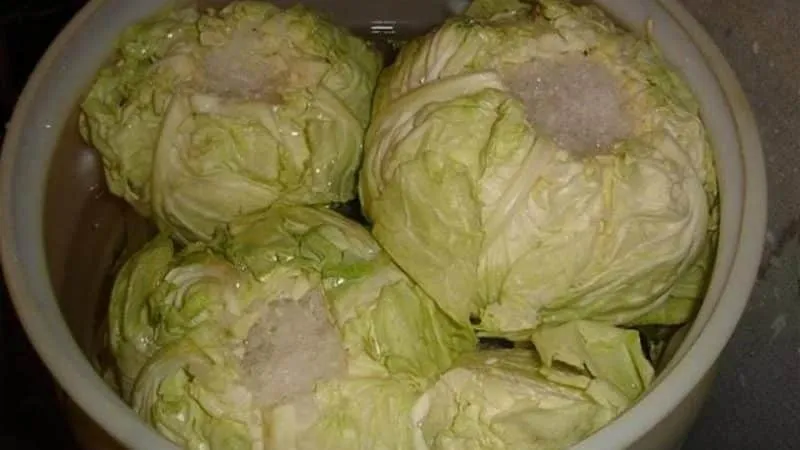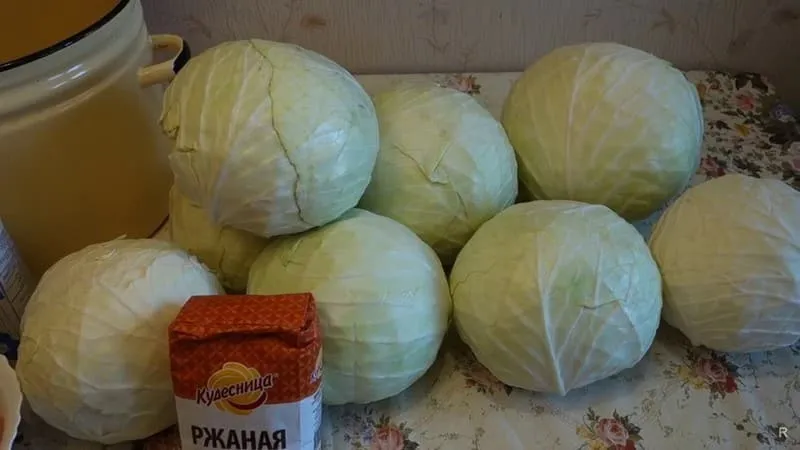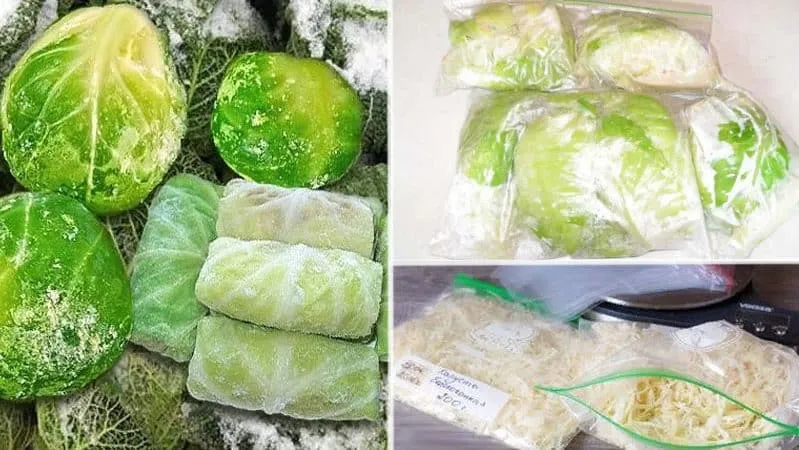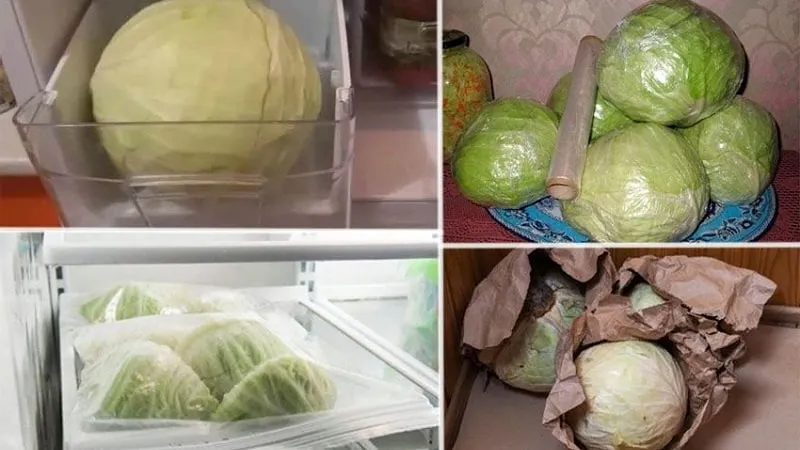Cabbage – a nutritious seasonal vegetable, rich in vitamins and minerals. For example, its vitamin C content rivals that of citrus fruits. To preserve its nutritional value and taste, proper storage is essential.
Learn how to store fresh cabbage in the refrigerator and discover techniques to extend its shelf life from 6 to 12 months in our article.
Table of contents
How Long Can Cabbage Be Stored in the Refrigerator?

Often, a whole head of cabbage is more than needed for a single dish. Most home cooks prefer to save the unused portion for later use. The refrigerator is ideal for this purpose, especially if the cabbage is cut or shredded.
With proper storage, freshness can be maintained for up to 2 months. If using the freezer, the shelf life extends to 6-12 months.
How to Store Cabbage in the Refrigerator
To keep cabbage fresh longer, it’s important to select the right head, protect it from moisture, and prepare it correctly before storage. Excess humidity can cause blackening, wilting, and rotting.

When purchasing, pay attention to:
- Late-season varieties. They stay fresh longer, handle processing better, and retain their flavour during storage.
- Firm, dense heads with tightly packed leaves.
- Fresh vegetables without defects.
Preparing cabbage for storage:
- Trim the stem and remove any damaged or outer leaves.
- Wrap the head tightly in cling film, using 2-3 layers. Ensure the packaging is airtight to prevent moisture penetration, which leads to rot.
- Place the wrapped cabbage in the refrigerator, preferably on a shelf with a temperature no higher than 2°C.
Red and white cabbage can be stored whole, cut, or shredded under low-temperature conditions.
Note: Cut cabbage retains its properties well, but exposed surfaces dry out and turn yellow. Refresh the cut edges before cooking by trimming any dried areas.
If you plan to use the cabbage within 2-3 days, wrapping it is optional. For longer storage, use a plastic bag or cling film to maintain freshness.
To prevent rotting or blackening, store cabbage in the vegetable drawer found in most modern refrigerators. If your fridge lacks one, place the cabbage where you normally store vegetables and set the temperature to the lowest possible setting.
Regularly remove wilting leaves to extend the vegetable’s freshness by several days.
How to Store Cabbage in the Freezer

For freezer storage:
- Wash and thoroughly dry the head.
- Remove outer leaves and trim any spoiled areas.
- Shred the cabbage.
- Blanch it briefly in boiling water – this helps preserve colour and flavour.
- Divide into airtight bags or containers and freeze.
Frozen cabbage lasts up to a year and is perfect for soups, stuffed cabbage rolls, and side dishes.
Storage Without a Refrigerator

At room temperature, a whole cabbage can last 3-4 months. However, this method has drawbacks: the vegetable loses its firmness and appearance quickly. Outer leaves may dry out or rot if stored in overly warm or humid conditions.
Another option is cellar storage. Early-season varieties stay fresh for about 3 months, while late-season ones last up to 6 months.
Two primary storage methods:
- In cling film: Protects cabbage from moisture and microbes, making it the most hygienic choice.
- In a wooden crate: Remove outer leaves and trim stems. Check monthly for spoilage and discard any rotting heads.
If you live in an urban area without a cellar, consider:
- A glazed and insulated balcony: Avoid this if temperatures drop below 0°C, as freezing makes cabbage mushy and prone to rot.
- A pantry: Heads will last about 2 months if wrapped in paper or film. Inspect every 10-12 days and remove any spoiled vegetables.
These methods only work for whole heads.
Conclusion
By following these tips, you can store cabbage for extended periods. Always choose fresh, undamaged heads. Protect them from moisture and regularly check for spoilage to prevent contamination.
If storing cut cabbage in the fridge, maintain a temperature between -1°C and +2°C for optimal results.







